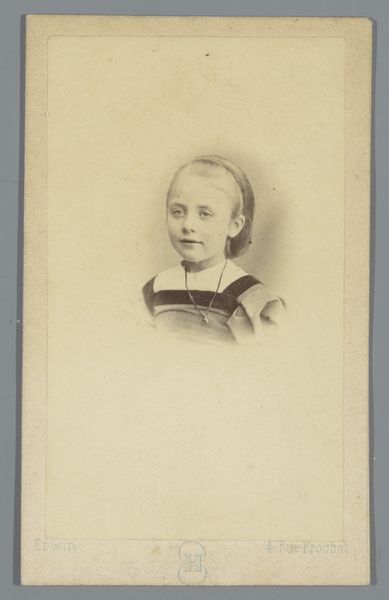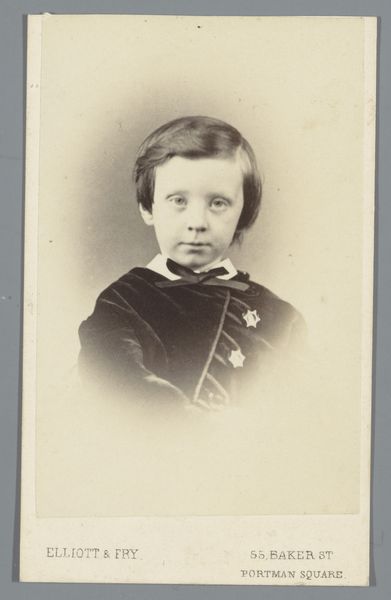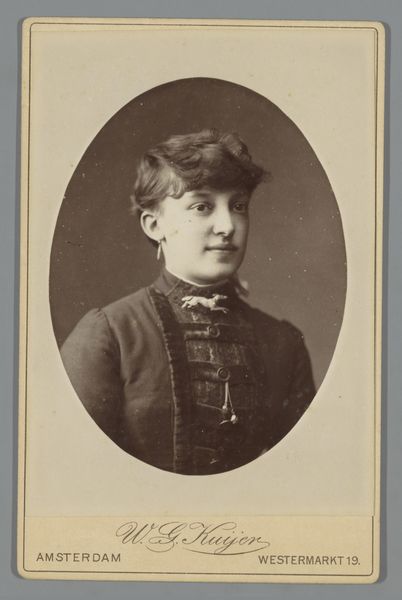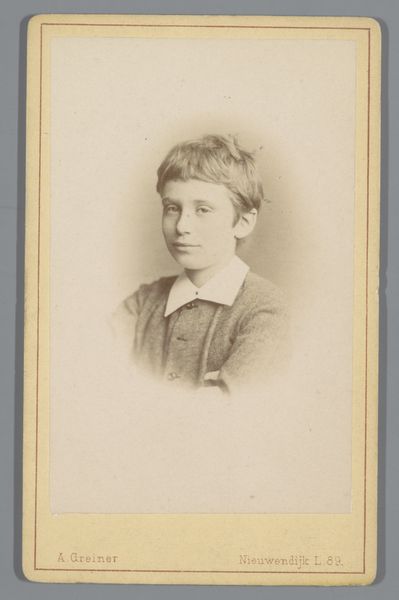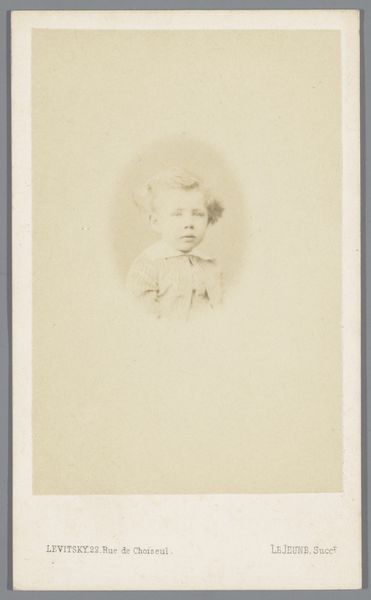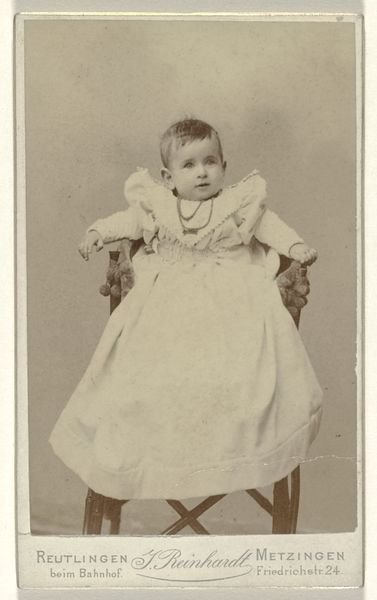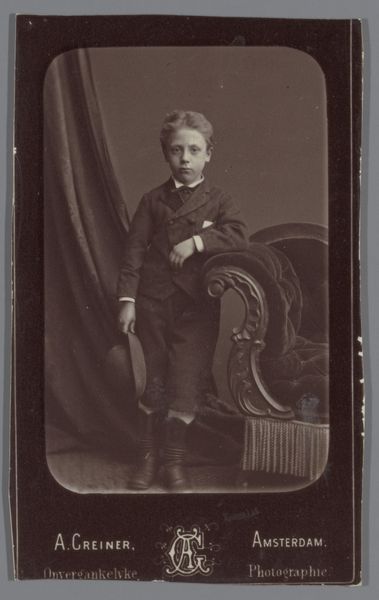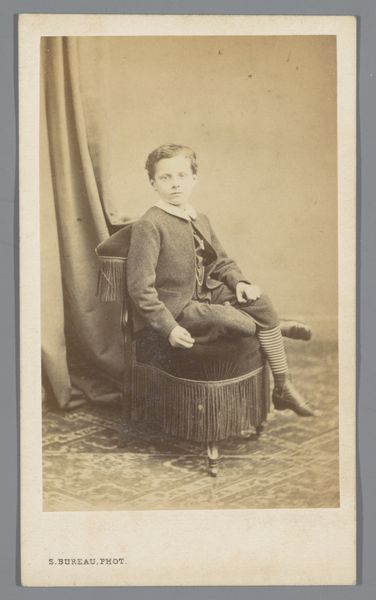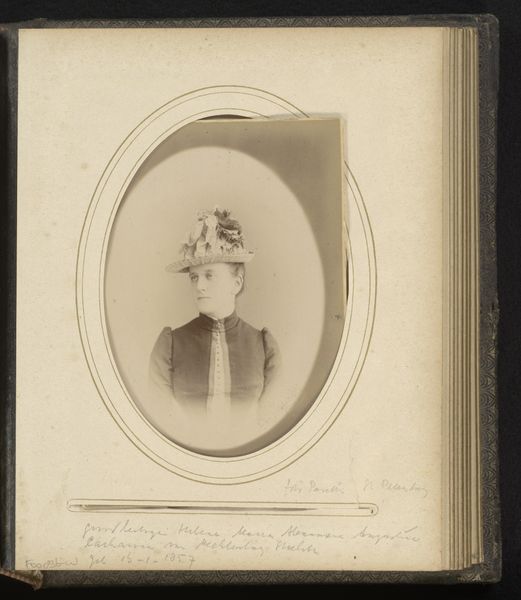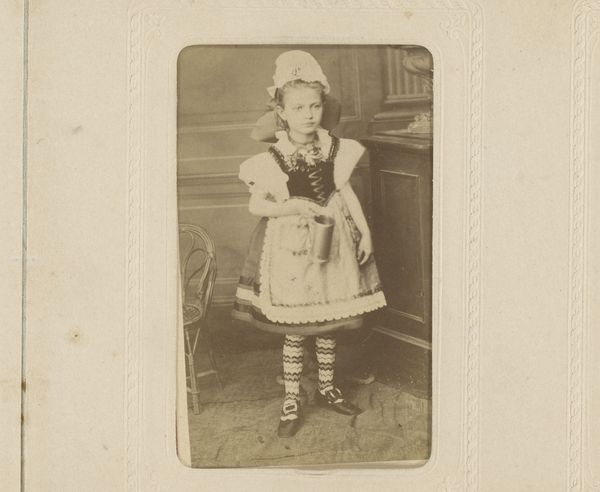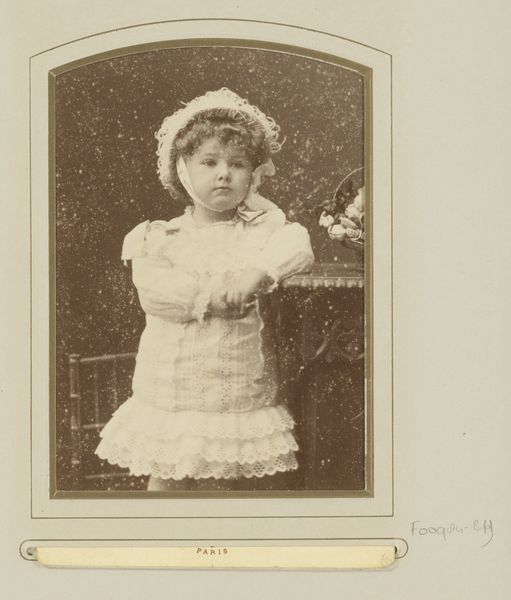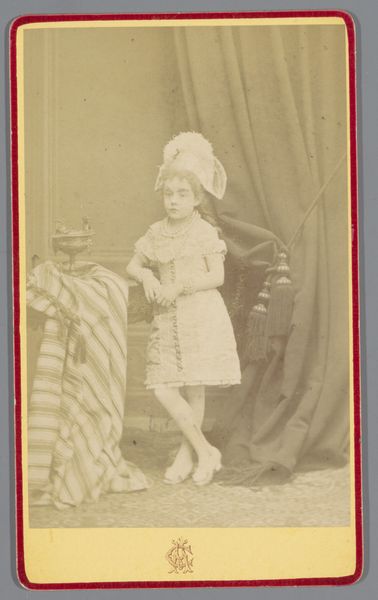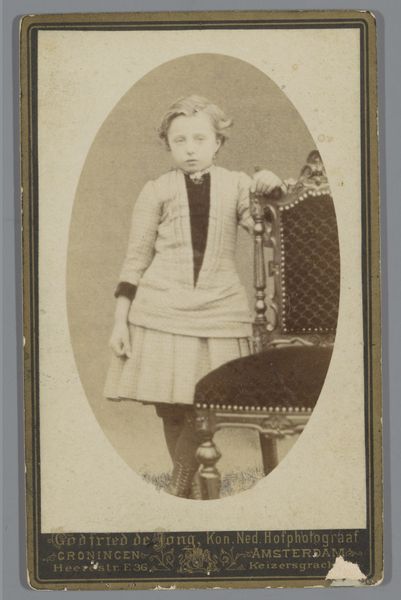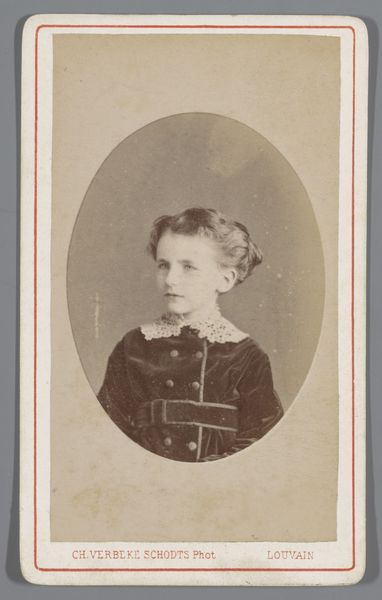
photography, albumen-print
#
portrait
#
photography
#
child
#
19th century
#
albumen-print
Dimensions: height 98 mm, width 61 mm
Copyright: Rijks Museum: Open Domain
Curator: Let's consider this portrait by Walery, active between 1873 and 1885. What do you see? Editor: A wistful glance into another world. He's like a tiny diplomat sent from a fairytale court, burdened with secrets he can't quite articulate. The sepia tones enhance that dreamlike, slightly melancholic quality. Curator: It's an albumen print, a popular photographic process of the era, giving it that distinct tonality. The formal arrangement places the subject, an unidentified child, within an oval frame, focusing attention on his face and costume. Editor: The costume! Absolutely extraordinary. The details in the embroidery seem to dance even within this small space. A miniature symphony of stitches—all holding its breath. It feels rich and heavy with tradition and purpose. Curator: The clothing provides key information; note the detailing, which offers cultural context and could hint at the subject's background, even status. It serves to define the child, framing our understanding within its sartorial language. The materiality signifies identity and perhaps, aspiration. Editor: It’s beautiful, really beautiful, but I’m wondering who picked out the clothes and decided, at least for the moment of capture, that this child should hold history—and destiny—on his shoulders. How long did he actually stay in costume? Does he remember? What did it mean to *him*? I can't help but imagine his life off-camera, moments of play and dreams unburdened by garments heavy with representation. Curator: A valid observation, though, of course, those subjective interpretations lie beyond the strict scope of photographic evidence and compositional intent. Nonetheless, it is worth noticing how the formal choices are framed. Editor: I find my response framed with nostalgia. Curator: An emotional reaction speaks to art’s intrinsic power, as always, and even beyond analytical interpretation. Editor: Perhaps every portrait is equally about absence as it is presence?
Comments
No comments
Be the first to comment and join the conversation on the ultimate creative platform.
